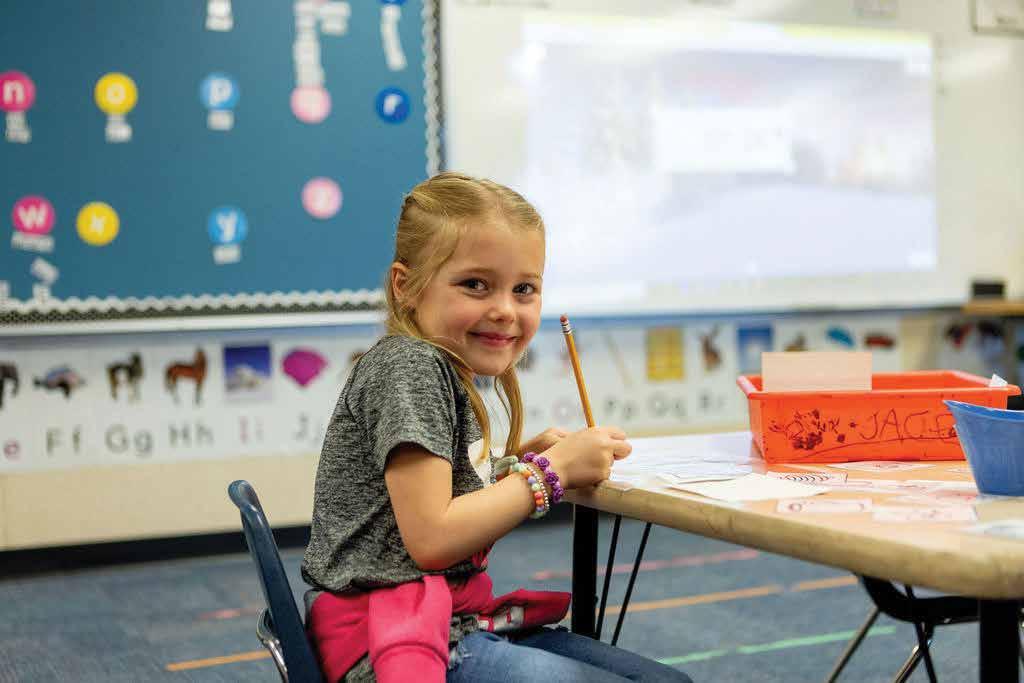Backto SchoolGuid


















































Academy 20, asd20.org
719-234-1200
Calhan RJ1 calhanschool.org
719-347-2766
Cheyenne Mountain 12 cmsd12.org, 719-475-6100
Colorado Springs 11, d11.org
Aug. 14 for elementary, grades 6 and 9; Aug. 15 for rest of students
Aug. 10 for grades 6-12; Aug. 15 for K-grade 5; Aug. 22 for Pre-K
Aug. 17 for K – grade 6, grade 7, grade 11 and 12 orientation; Aug. 18 for grades
8, 9 and 10 orientation;
Aug. 21 first day for preschool
719-520-2000 Aug. 16
Cripple Creek/Victor RE1 ccvschools.com
719-689-2685
Edison 54-JT, edison54jt.org
719-478-2125
Ellicott 22 ellicottschools.org
719-683-2700
Fountain-Fort Carson 8 ffc8.org, 719-382-1300
Hanover 28 hanoverhornets.org
719-683-2247
Harrison 2, hsd2.org
719-579-2000
Lewis-Palmer 38
lewispalmer.org
719-488-4700
Manitou Springs 14 mssd14.org, 719-685-2024
Miami Yoder 60JT
miamiyoder.com
719-478-2186
Peyton 23JT
peyton.k12.co.us
719-749-2330
School District 49, d49.org
719-495-1100
Widefield 3, wsd3.org
719-391-3000
Woodland Park RE2 wpsdk12.org
719-686-2000
May 29
May 23
May 23 for Pre-K-6; May 24 for grades 7-12
May 21 for elementary; May 24 for middle and high school
Aug. 14 May 23
Aug. 17; Aug. 29 for preschool
Aug. 8 for K, grades 5, 6, 9; Aug. 9, rest of students; Aug. 21 for Pre-K
Aug. 7 for grades 3, 4, 6, 9;
Aug. 8 for K, grades 2, 7, 10;
Aug. 9 for grades 1, 5, 8, 11, 12; Aug. 10 for Pre-K and Online Academy
Aug. 8 for grades 1-12; Aug. 10 for K; Sept. 5 for preschool
Nov. 20-24; Dec. 18-Jan. 3; March 25-29
Nov. 17-27; Dec. 22-Jan. 8; March 22-April 1
Nov. 20-24; Dec. 25-Jan. 5; March 25-29
Nov. 20-24; Dec. 21-Jan. 5; March 23-29
Nov. 20-23; Dec. 18-Jan. 3; March 25-29
Labor Day (Sept. 4); Martin Luther King Jr. Day (Jan. 15); President's Day (Feb. 19); Memorial Day (May 27)
School is not in session on Mondays, unless needed as makeup days.
Labor Day (Sept. 4); Martin Luther King Jr. Day (Jan. 15); President's Day (Feb. 19)
Labor Day (Sept. 4); Martin Luther King Jr. Day (Jan. 15); President's Day (Feb. 19)
Labor Day (Sept. 4); Martin Luther King Jr. Day (Jan. 15); President's Day (Feb. 19)
May 24
May 23
May 24
May 17 for preschool; May 22 for K and grade 5; May 23 for grades 1-4 and 6-12
Aug. 8 May 23
Aug. 15 May 17
Aug. 18; Aug. 21 for K May 23
Aug. 8 for grades 6-12; Aug. 9 for K-grade 5; Aug. 29 for preschool May 23
Aug. 10 May 23
Aug. 1 for K, grades 6 and 9; Aug. 2 for rest of students; tentative first day Aug. 7 for preschool
Aug. 14; Aug. 15 for grades 7 and 8 including Grand Mountain School
May 24
May 22
Aug. 23 May 23
Nov. 21-24; Dec. 26-Jan. 9; March 26-29 School is not in session on Mondays.
Nov. 20-23; Dec. 22-Jan. 5; March 25-28
Nov. 20-24; Dec. 21-Jan. 5; March 25-29
Labor Day (Sept. 4); Martin Luther King Jr. Day (Jan. 15); President's Day (Feb. 19)
Labor Day (Sept. 4); Veteran’s Day (Nov. 10); Martin Luther King Jr. Day (Jan. 15); President’s Day (Feb. 19)
Nov. 21-24; Dec. 19-Jan. 2; March 26-29 School is not in session on Mondays.
Oct. 9-13; Nov. 20-24; Dec. 15-Jan. 3; Feb. 19-23; March 25-29
Nov. 20-24; Dec. 18-Jan. 3; March 25-29
Nov. 20-24; Dec. 20-Jan. 3; March 25-29
Labor Day (Sept. 4); Martin Luther King Jr. Day (Jan. 15); President’s Day (Feb. 19)
Labor Day (Sept. 4); Martin Luther King Jr. (Jan. 15); President’s Day (Feb. 19)
Labor Day (Sept. 4); Martin Luther King Jr. Day (Jan. 15); President’s Day (Feb. 19)
Nov. 21-24; Dec. 22-Jan. 5; March 26-29 School is not in session on most Mondays.
Nov. 20-23; Dec. 25-Jan. 4; March 25-28
Oct. 9-20; Nov. 22-24; Dec. 22-Jan. 2; March 18-29
Nov. 20-24; Dec. 21-Jan. 3; March 25-29
Nov. 20-24; Dec. 22-Jan. 9; March 25-29
Labor Day (Sept. 4)
Labor Day (Sept. 4); Martin Luther King Jr. Day (Jan. 15); President’s Day (Feb. 19)
Labor Day (Sept. 4); October Day (Oct. 6); Indigenous People’s Day (Oct. 9); Martin Luther King Jr. Day (Jan. 15); President’s Day (Feb. 19)
Labor Day (Sept. 4); Martin Luther King Jr. Day (Jan. 15); President’s Day (Feb. 19)

We provide quality care and education at no cost for parents of eligible children.
Meals and diapers are provided at no charge.
0 – 3 years of age availability in Florissant, Woodland Park, and Cripple Creek with our award-winning providers.

3 – 5 years of age availability in Cripple Creek with a full day of care and education through the Head Start Program and Universal Preschool program of Colorado.


As bus driver shortages persist across the Colorado Springs area, districts are searching for creative ways to alleviate stresses placed on overburdened transportation departments.
Even so, students can expect more cut routes and fewer field trips for the foreseeable future.
“It feels to me like it’s a shift. Things are not going to be the way that they have been in the past, and they may never return to that,” said Kevin McCafferty, Colorado Springs School District 11’s Transportation Operations Manager.
Bus routes have decreased in the last five years from about 100
to just 59 due to a combination of enrollment decreases and driver shortages. Some are being consolidated for the first time, requiring students to walk a bit further to their bus stops this fall.
After years of unsuccessful attempts at filling vacancies, D-11 eliminated 30 driver positions ahead of the 2023–2024 school year. This shakeup is a proactive move by the district to free up buses for other uses, according to McCafferty.
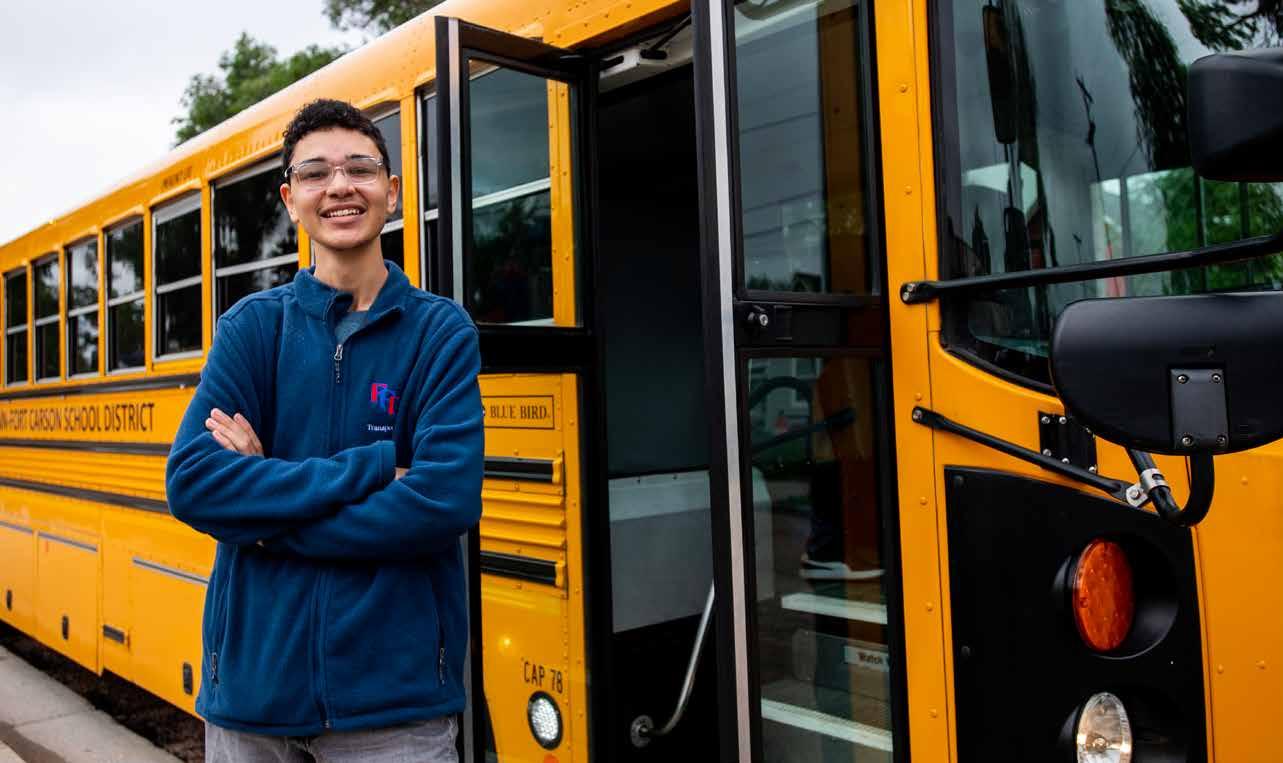
While the district has the capacity to accommodate less than half the number of field trips it covered a decade ago, the outlook is less dire than in recent years, he said.
D-11 has partnered with outside driving contractors HopSkipDrive and EverDriven to assist in daily
routes and occasional field trips. The measure is more costly than hiring additional bus drivers, McCafferty said, but in their absence, contractors may be the necessary permanent solution.
EverDriven transports special education and McKinney Vento students, or those who have been geographically displaced from their schools. HopSkipDrive, a new partner as of 2022, transports pockets of students who might live “off the beaten path” of regular bus routes, where straying from said routes would add significant time for bus drivers and risk tardy arrivals.
The HopSkipDrive rideshare service transported about 70 students to and from school last year.
“In an ideal world, it would be a temporary solution. I think the reality is it’s not going to be a temporary solution until somebody comes up with the magic bullet that fixes driver shortage issues, and I don’t know what that is,” McCafferty said.
School District 49 found limited recruitment success in Falcon, where the district hosted its inaugural school bus test driving event in June in an effort to fill 26 vacant driver positions. Applications are still coming in as a result. As of the start of July, about 10 new drivers are undergoing training.
Largely considered a success, Pietraallo said he expects to host similar recruiting events in the future. It provided just enough
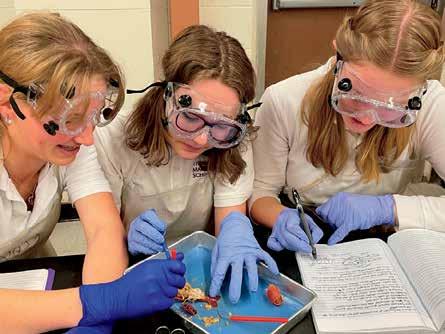



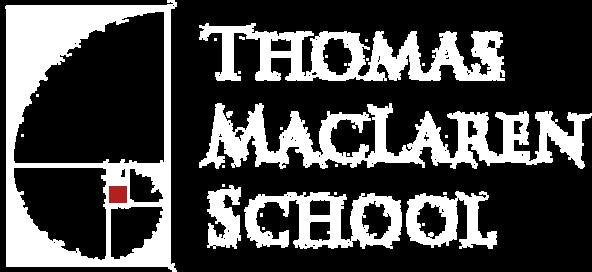

of a boost to keep the district’s transportation staff steady.
“It is a pretty fluid situation as it takes about 4-6 weeks of training to obtain a CDL (Commercial Driver’s License) and not all applicants are able to obtain it. Right now we are just about in the same shape as we were when we started the last school year,” Pietraallo said in a written statement. “Many of our staff members will still have to drive routes along with performing their regular 8 hour a day job responsibilities, until we are able to get fully staffed with drivers.”
Other districts have staved off the worst effects of national shortages. Fountain-Fort Carson School District 8 will have all of its routes covered heading into the school year. Spokesperson Christy McGee said she attributes the success to D-8’s competitive starting pay at $21 an hour for route drivers, one of the highest in the Pikes Peak region.

D-8 also lowered its age requirement from 21 to 18 this year following 2019 legislation allowing younger drivers to acquire a commercial driver’s license.

Many districts continued operating under the old age requirements, according to D-8 Director of Transportation Robert Leach. Insurance can pose a barrier since some providers will not cover teenage drivers, but overcoming that hurdle comes with potential for filling additional positions. D-8 just hired its youngest-ever driver this year at 19 years old.
“Not just District 11, but all the districts are doing what they can to do the best for their students,” McCafferty said. “Sometimes that means that it’s a little better situation for a parent or students, or sometimes it’s not as good. You have to look at it as an overall program.”

Leaders say the training process takes about a month to complete on average but can vary by driver. While retirees and those looking for a second job with flexible hours tend to be the target driver demographic, schools accept applications from all pockets of the community interested in filling a dire need.
Until that need is met, cutbacks and consolidations will remain the norm for K-12 students.


 By Brooke Nevins brooke.nevins@gazette.com
By Brooke Nevins brooke.nevins@gazette.com
After a student was killed in an auto-pedestrian crash outside a Colorado Springs high school, the city is tentatively eyeing the need for more school zones outside of its high schools.
A new school zone with five flashers was installed at Doherty High School in April in response to the death of 17-year-old Doherty student Giorgia Trocciola in March. But Colorado Springs’ long-held practice of installing school zones only around elementary and middle
schools in areas with speed limits over 30 mph has been met with renewed opposition by school staff and parents beyond District 11.
All of School District 11’s high schools were built in the 1970s and ’80s when Colorado Springs was “predominantly a boundary system,” Superintendent Michael Gaal previously told The Gazette. Most students went to their neighborhood school, meaning fewer had to commute to school by car.
But the lack of school zones for high schools extends across developing districts too.
Currently, Academy District 20’s Discovery Canyon High School is the only high school that “appears to have an existing school zone” aside from Doherty, said city traffic engineer Todd Frisbie — but only because it shares a campus with its elementary and middle schools. He said the practice can sometimes be attributed to a school already being surrounded by low-speed-limit neighborhood streets or low-volume roads, and even if there’s no school zone with timed flashers, many students have the option to use push-to-activate flashing crosswalks.
“With every school, we ensure that there is a safe route,” Frisbie said. “If (students) have to cross a major street, we make sure there’s a signalized location for them to cross.”
Installing school zones carries a hefty price tag. Costs could fluctuate from school to school depending on the needed number of flasher poles, which, equipped with a controller and solar panel, cost around $10,000 each.
Auto-pedestrian crashes related to school activity is also relatively rare, Frisbie said.
The city traditionally takes a
CONTINUED ON PAGE 10

The University of Northern Colorado Extended Campus provides access to a UNC education online or at one of our o -campus centers in Loveland and Denver. We o er degree completion programs, master and doctorate degrees, certificates, and endorsements through flexible online or face-to-face formats.
Our accelerated programming is designed for adult learners, working professionals, and non-traditional students who otherwise wouldn’t be able to attend an on-campus o ering.
Apply today!
Toll-free: 1-800-232-1749
Website: extended.unco.edu




Email: Extended.Campus@unco.edu

At Thrive Homeschool Academy, we believe education is more than academics. Here, your student can attend once-a-week classes alongside other homeschooled students and participate in after-school and extracurricular activities like Art, Technology, Yearbook and String Orchestra.

Elevate their learning beyond the books.
At Thrive Homeschool Academy, we believe education is more than academics. Here, your student can attend once-a-week classes alongside other home-schooled students and participate in after-school and extracurricular activities like Art, Technology, Yearbook and String Orchestra.
Elevate their learning beyond the books.
data-driven approach in installing safety measures, and if analysis shows safety performance is worse than expected, safety measures are then identified to improve its performance. Most of his department’s money pool goes toward bolstering the safety of busy intersections, where the “most serious and fatal” crashes most often occur.
ENRICH • DISCOVER • CREATE

Get started at hsd2.org/THSA
“It’s in the city’s best interest to spend those dollars where we potentially get the biggest reduction in those types of crashes,” Frisbie said. “It’s more than just about schools, it’s city-wide. There are other areas of safety that we’d like to improve, (so) we balance where the funding will best be utilized.”
But he has been working with school districts, including District

11, 20 and 2, that have reached out about installing them outside their high schools, he said.
“Anecdotally, I don’t think I’ve heard any parent, guardian, or staff member say they don’t want school zones near their schools,” District 11 spokesperson Devra Ashby said in a written statement. “It would be nice to have them at all of our schools.”
In neighboring D-20, a spokesperson said the district requested the city conduct traffic studies at Rampart, Liberty and Pine Creek high schools and to consider including nearby middle schools in those studies.
Frisbie said the city has not formally identified the next school zone candidates, but after conducting traffic studies and considering enrollment size,
schools adjacent to busier roads with higher speeds would likely be prioritized.
Caught speeding in a school zone? There is an upside, Frisbie noted.

All speeding tickets issued in a school zone have a surcharge that goes to the city’s school safety program, a pool of money used to maintain flashers and that is distributed to schools to help offset the costs of hiring crossing guards. There’s often leftover money annually to spend on capital improvement projects, too.
“The incident at Doherty wasn’t like a wake up moment for us,” he said of the city traffic department. “We have been involved in the schools and school safety for decades.”
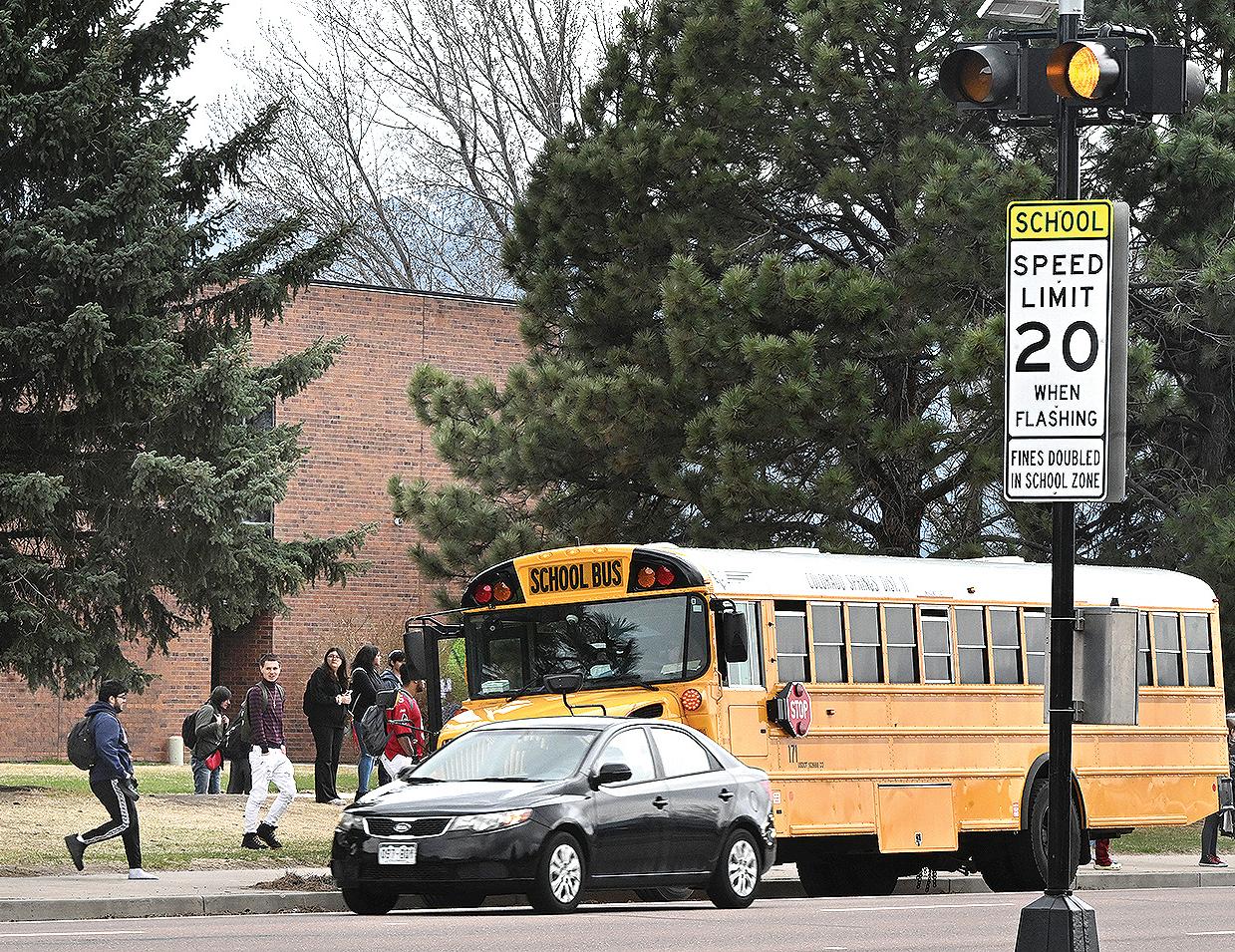
“I don’t think I’ve heard any parent, guardian, or staff member say they don’t want school zones near their schools. It would be nice to have them at all of our schools.” — District 11 spokesperson Devra AshbyNewly installed school zone lights went live in front of Doherty High School. The zone will bring speed limits down to 20 mph before and after school on a busy Barnes Rd., not only making it safer for kids crossing the street, but also for the many kids that board buses along Barnes Rd. In March, a foreign exchange student was killed when crossing the busy road in front of the high school. Photo by Jerilee Bennett, The Gazette.
Local community members will play a key role in forging their schools’ paths forward this November during school board elections.
The publicly elected board members hold consequential decision-making power, like setting school policy, approving budgets and spending initiatives, hiring superintendents and crafting an overall vision for the district they govern. In districts with notable divisions among current school board members and/or the communities they serve, this year’s election could mark dramatic shifts in priorities and governance.
Terms are staggered, so every board member won’t face reelection in the same year. Some years, however — as is the case for most local districts this election season — a majority of terms will end at once. Voters should pay especially close attention to those elections, according to Colorado

Association of School Boards Executive Director Jubal Yennie. When multiple seats are up for together or under a closely shared vision, Yennie said, major shifts
can follow should those blocks of candidates be elected.
During the 2021 election, for example, a slate of candidates that campaigned on conservative
views toward hot-button issues triumphed over its competition. Nine candidates in the region’s three most populous districts — Colorado Springs School District 11, Academy School District 20 and School District 49 — won the election after receiving $57,500 in financial support from Springs Opportunity Fund, a group with Republican ties. The candidates promised to improve test scores by refocusing on the basics of reading, writing and arithmetic.
Following a marked shift from a more progressive board in 2021, D-11 soon dissolved its Department of Equity and Inclusion and later parted ways with Superintendent Michael Thomas, whose stated goals were to address equity and close achievement gaps.
More recently, the board shifted D-11 to an opt-in system for surveys that collect data on students’ personal thoughts and experiences, including the Healthy Kids Survey, which seeks to address health problems and to track behaviors and trends. A majority of the board
CONTINUED ON PAGE 12
CONTINUED FROM PAGE 11
also expressed support for a districtwide regulation that would prohibit faculty and staff from asking students their pronouns. The final version of the regulation was far less specific, however, and made no explicit mention of pronouns. D-11 will have four of seven board seats up for election this year.
Stark changes in district priorities are not necessarily a bad thing, Yennie said. Rather, they are often reflective of a community’s changing interests.
“When you start having those pivots from those standpoints, what we try to teach — and CASB doesn’t take a position other than we want effective governance — we would teach folks to make sure you are working from the values of your community, and oftentimes that gets translated at the ballot box,” Yennie said.
A majority of school board seats will be up for election in Cheyenne Mountain School District 12, Colorado Springs School District 11, Ellicott District 22, FountainFort Carson School District 8, Hanover District 28, Lewis-Palmer School District 38, Manitou Springs School District 14, School District


49 and Woodland Park School District RE-2.
Candidates have until September 1 to file their written intent to run for the school board. The exact makeup of a district’s candidate pool will remain murky until that date.
Yennie notes that although the school board is a nonpartisan body that does not ascribe to a particular political party, it is not unusual for individual candidates to shirk that nonpartisan identity.

“It’s gonna happen,” Yennie said. “How we value things and how we frame those things, people can’t just totally dismiss those, but we try to encourage folks to work as bipartisan and collectively as possible.”
Voters shouldn’t automatically dismiss candidates who run their campaigns with stated ties to political parties, he said, since many issues that come before a board are bipartisan. That is, both parties check their personal beliefs at the door in agreement for what is best for all students.
“You want folks that are learners. We want people with open minds to be able to learn,” Yennie said.
CONTINUED ON PAGE 13
“You want folks that are learners. We want people with open minds to be able to learn. We’re in the business of learning.
Teaching, learning and helping students grow the best they can.”
— Colorado Association of School Boards Executive Director Jubal Yennie
“We’re in the business of learning.
In one notable display of politics, four self-defined conservative candidates in 2021 took control of the five-person Woodland Park School District RE-2 board. The district has since catapulted into the national spotlight following rapid changes in alignment with its stated conservative values.
In the span of five months, the board twice appointed controversial interim Superintendent Ken Witt, who in 2015 had been recalled from his position as school board president in Jefferson County; became the first to adopt new social studies curriculum standards known as American Birthright, which were created by a conservative advocacy group; implemented a gag order preventing staff members from speaking publicly about the district without prior superintendent approval; and chose not to reapply for grant funding that would retain mental health workers.
Whereas the board maintains its actions have been in the bipartisan interest of its students, some staff
and parents begged to differ. Protests ensued: Students and parents protested in front of schools and at school board meetings, and dozens of teachers conducted a sick-out this spring in opposition to some of the board’s plans.
In response to concerns about Witt’s one-year extension as interim superintendent, Board Vice President David Illingworth said the board still plans to deliver on its promise of a proper search for a permanent leader following November’s election.
How the community votes in November’s election will determine whether the board will continue on its current path. Several opponents have already stepped up to challenge the three incumbents whose seats are up for re-election.
“The community will get their input on one of the most important decisions that we make as a school board, which is choosing a superintendent to lead these schools, lead these teachers and professionals, and lead our kids to a successful future,” Illingworth said at the May board meeting. “They will get that opportunity. They deserve that opportunity.”
Established in 1955, St. Paul Catholic School provides quality education that allows students of all faiths to excel academically and grow spiritually, focusing on the whole child. We are a welcoming, safe community of faculty, parents and students.



New families for the 2023 – 2024 school year with children in K – 8: HALF PRICE TUITION for the year

Early Childhood Education Program

Pre-School: 3 Days 1/2 or Full Day M-W-F
5 Days 1/2 or Full Day
Pre-Kindergarten: 3 Days Full Day M/W/F

5 Days Full Day
Elementary School
Kindergarten through 5th Grade
Middle School 6th Grade through 8th Grade
1601 Mesa Avenue, Colorado Springs 719-632-1846 | www.stpaulpmcs.org
Introduce your child to the world of symphonic music with our Free for Kids program. Young audiences can attend the Colorado Springs Philharmonic with complimentary admission (two free tickets for every purchase of an adult regular priced ticket). Free for Kids tickets must be requested in-person at the Pikes Peak Center or the Ent Center for the Arts box offices. Subject to availability.
csphilharmonic.org/education
“Thy word is a lamp unto my feet; and a light unto my path.”
— Psalm 119Ages 7 to 17
Teaching, learning and helping students grow the best they can.”
Several Colorado Springs-area school districts will be under new leadership heading into the 2023–2024 school year. Three individuals will assume to superintendent title in their respective districts for the first time, each with a unique set of qualifications.
Peter Hilts, School District 49
Prior position: Chief Executive Officer of School District 49.
Other experience: high school principal, director of strategic programs and director of academic services at The Classical Academy; director of technology and information at Manitou Springs School District 14.
Though his title is changing, Superintendent Peter Hilts’ responsibilities are not. No stranger to School District 49, Hilts has served as one of the district’s top executives for a decade under its threechief model. In 2013 Hilts was appointed the Chief Education Officer under this model, which spread superintendent duties across several administrators with different focus areas. Hilts has run the district on his own as the Chief Executive Officer, the D-49 equivalent to interim superintendent, ever since the chief business and operations officers resigned last summer.
School board President John Graham said the district is looking for “consistency” now that the board has done away with the three-chief model and appointed Hilts its
sole leader. A workforce survey conducted last fall found 78% of respondents viewed Hilts’ leadership as favorable or highly favorable. As such, the district will continue on the course it has already been charting under his leadership.
Sean Dorsey, Manitou Springs School District 14
Prior position: assistant superintendent for the Sand Creek Zone in School District 49.


Other experience: principal in Colorado Springs School District 11, assistant principal in Fountain-Fort Carson School District 8 and Widefield School District 3, special education teacher in Greeley.
New to Manitou Springs but a veteran in local schools, Superintendent Sean Dorsey worked in four other districts in the region before assuming his new superintendent role.
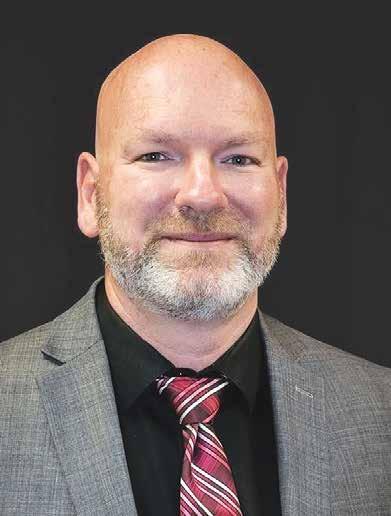
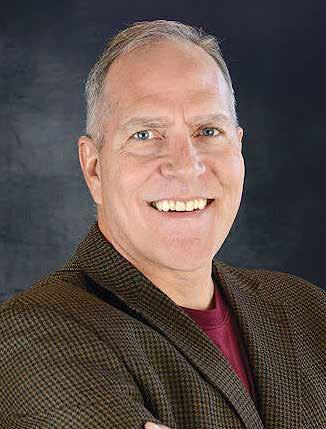
Dorsey describes his tenure as a return to a “tight-knit,” small town community similar to that in which he grew up. As such, he said, he understands and appreciates the value of education in a setting that’s more intimate than some of the larger districts he has served.
Jinger Haberer, Academy School District 20
Prior position: superintendent of Ellensburg School District in Ellensburg, Wash.
Other experience: assistant superintendent of student achievement in
Poudre School District; assistant principal, principal and director of student achievement in Aurora Public School District; secondary science, language arts and math teacher in various Colorado, Oklahoma and Nevada schools.
Long before her days in Washington, Superintendent Jinger Haberer called Colorado home. It’s where she grew up, and it’s where she began her 35-year career in education.
Haberer led successful efforts as superintendent in Ellensburg, Wash., to pass a levy and a $59.5 million bond project, leading to two new school buildings and a remodel of a third. She emphasized her strengths in building community connections, having previously increased dual credit opportunities, partnered with local community colleges to allow graduates one free year of schooling and worked with the county to increase internship opportunities and certified nurse assistant credentials among her students.
Haberer also developed an attendance zone committee whose recommendations better aligned the district’s zones with transportation needs caused by a bus driver shortage, a hot topic in Academy School District 20, where the school board passed, delayed and then canceled altogether a controversial plan that would have relieved some transportation strains by changing school start and end times. Transportation remains a critical concern as some field trips and sporting events lie on the chopping block for lack of reliable transport.
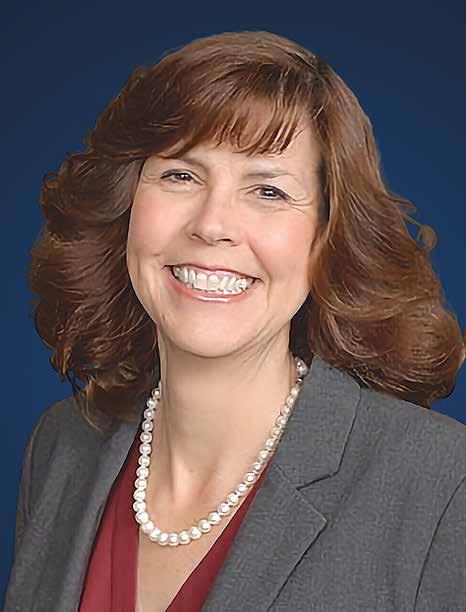



Public and charter schools across Colorado and in Colorado Springs are gearing up to introduce a new program aimed to provide healthy nutritious meals to all students this upcoming school year.
The Healthy School Meals for All Program, an initiative passed in part of Proposition FF during the November general election in 2022, will work with the U.S. Department of Agriculture’s National School Lunch and Breakfast Program to provide free meals to all participating students, beginning at the start of the 202324 school year.
With 56.75% voting yes on the bill, the majority of voters agreed to reduce tax deduction amounts for those earning over $300,000 annually, with allocated revenue from that deduction change to fund the new meals program.
The program will work to reimburse schools to provide free meals to students and assist in grants to purchase food produced locally in Colorado.


“Having school meals available for all students who need them has been a long-time goal for many,” said Ashley Wheeland, director of public policy for Hunger Free Colorado.
“It is important to put it in place now after the COVID -19 pandemic because we saw how fragile food security can be for families. This continues to be the case with a high cost of living in Colorado and inflation, especially in terms of food costs.”
Hunger Free Colorado is a statewide nonprofit organization, dedicating efforts to ending hunger and limiting food insecurity across the state.
Leading the efforts in advocacy for the initiative, the organization believes the new program to be an “investment in the public education of children,” considering students experiencing hunger tend to struggle academically, and are more prone to behavioral problems, as well as emotional, mental and physical health issues, according to the organization’s website.
CONTINUED ON PAGE 17
According to HFC, more than 60,000 children across the state come from families who can’t afford to pay for school lunch.
Before the initiative passed, a family of four needed to make less than $51,000 to qualify for free lunch through the National School Lunch Act — a driving factor in promoting the bill to ensure students across the state are fed throughout the school day.

Now, students can be guaranteed free lunch at school, regardless of a family’s income.
“Providing meals universally free to students at participating schools promotes equity and reduces stigma of school meals, eliminates unpaid meal debt once the program has been implemented, and increases the number of students eating school breakfast and lunch each day,” Jenny Herman, Colorado’s programs manager for the school nutrition unit, said.
Research conducted by the Brookings Institution has shown providing children with healthy meals at school improves kids’ attention and classroom engagement, which leads to better grades and higher attendance rates, which overall contributes to higher
rates of graduation.

According to studies conducted and referred to by the institution, “increasing the nutritional quality of school meals appears to be a promising, cost-effective way to improve student learning.”
In Colorado Springs, 178 public and charter schools are eligible to apply for the new meal program.
“School districts are currently opting into the Healthy School Meals for All Program as they complete their renewal applications with the Colorado Department of Education (CDE) School Nutrition

for the 2023–2024 school year,” Herman said.
With the application portal scheduled to close Sept. 15, the final number of schools in Colorado Springs set to participate in the new program will not be known until after the application deadline.
Schools in District 11 and District 20 have confirmed participation this fall, excluding Pine Creek High School and Village High School in D-20.
“(Pine Creek High School) will participate in the program in the
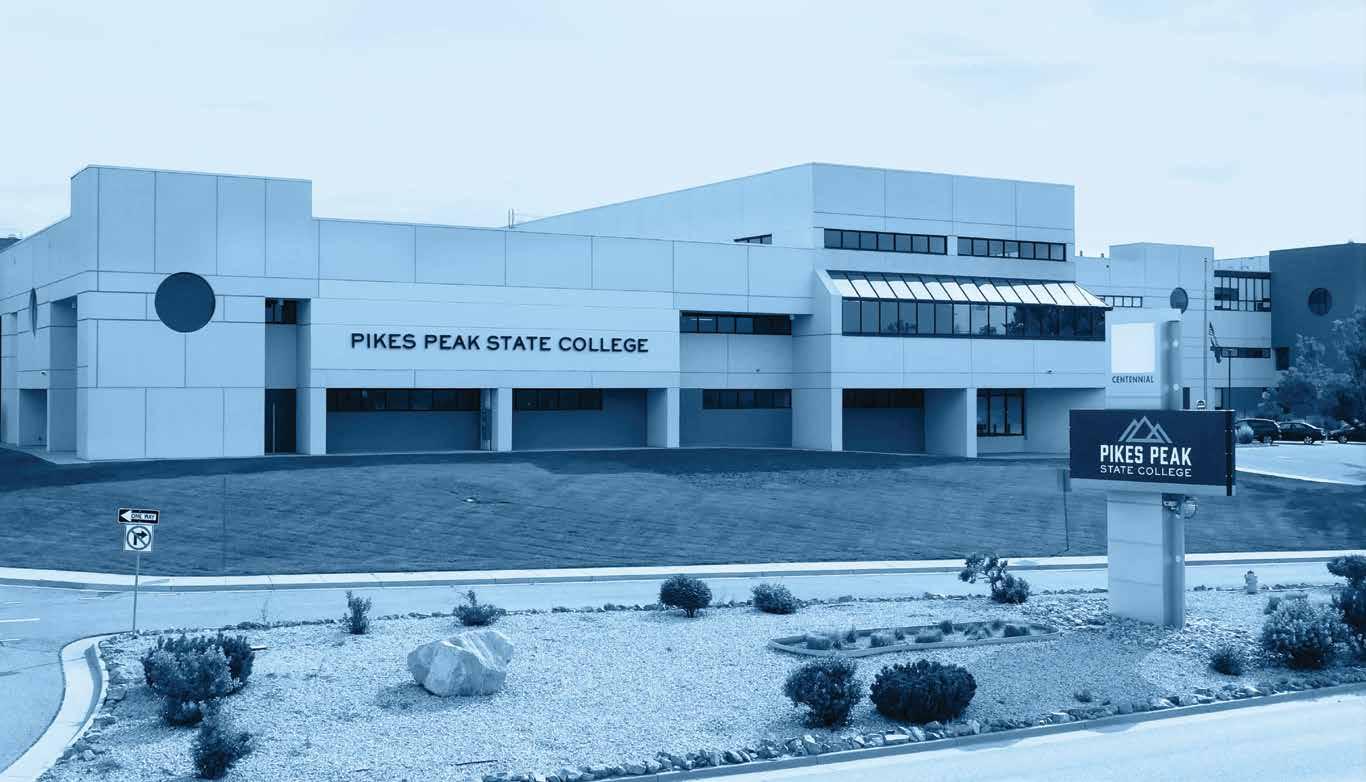
2024-25 school year,” said Krystal Story, a spokesperson for District 20 schools. “Currently, a studentrun program provides lunch therefore, the district must update the school’s kitchen so they can participate in the future.”
Additionally, Story said due to the “uniqueness” of Village High School’s hybrid learning program, the school doesn’t offer a lunch or breakfast program.
As for the students, Herman said they shouldn’t notice much change in their school’s cafeteria routine — only that for participating schools, lunch will be guaranteed.
“Schools will continue to serve breakfast and lunch to students following the federal meal pattern requirements, the biggest difference is that no children would be charged for a breakfast or lunch,” Herman said.
“We are encouraging districts to consider adjustments needed to their meal programs to support the anticipated increase in participation, which includes staffing levels, kitchen equipment, and lunch schedules to ensure all students can move through the service line quickly and have adequate time to eat.”
 By O’Dell Isaac odell.isaac@gazette.com
By O’Dell Isaac odell.isaac@gazette.com

Colorado Springs-area schools will kick off the new academic year with several new faces, programs, buildings, and national honors.
University of Colorado, Colorado Springs will begin the 2023-2024 academic year with a new leader at the helm for the first time in more than six years.

Jennifer Sobanet, a veteran leader with the University of Colorado system who joined the institution in 2016, assumed the role of interim chancellor July 1, filling — at least for now — the vacancy created when Venkat Reddy announced he would step down from the position and return to teaching.
“In Jennifer, the UCCS campus and the community of Colorado Springs will benefit from a history of thoughtful leadership in Colorado,” said CU President Todd Saliman in his announcement to the campus. “Jennifer’s experience, kindness and thoughtful leadership style are why I am pleased she will guide UCCS in an interim capacity.”
Reddy, who will remain at the UCCS campus as a professor, said he will assist in the search for a permanent chancellor.
The university also expects to welcome a new engineering building to its campus in the coming months.
Construction on the Anschutz Engineering Center is past the
from cradle to graduation
Head Start, Pioneer Preschool, Cresson Elementary, Cripple Creek


Victor Jr./Sr. High School with Career and Technical Education programs and Adult Education.


After school activities and clubs for Grades 3–12 provided by 21st Century grant. School meals provided for all students at no charge.
Cresson Elementary Cougars
We are Courageous
We are Creative
We are Kind
We are Caring
We are Calm
We are Connected
We are CHAMPIONS!
Cripple Creek Victor Junior/Senior High School New Construction Trades Building
halfway point, which the university celebrated with a beam signing ceremony in May. The 24,000 square-foot center, which will help accommodate the school’s expanded Aerospace Engineering Bachelor’s Degree program as well as a growing influx of students in other engineering and applied science disciplines, is expected to be completed in January.
The college will also drop the “interim” tag from one of its leaders, officials said. Thomas Aicher, who served as interim dean of the College of Business for eight months, will become the permanent dean in August.
Pikes Peak State College (formerly known as Pikes Peak Community College), recently completed its first full academic year under the new name. When Gov. Jared Polis approved the proposed name change, college president Lance Bolton said it would take several months to complete the changes in signage, school literature, etc., but that the overall mission of the school would not change.
“I want to be clear — there will be no change in mission for us,” Bolton told The Gazette last year. “We are growing on the four-year, bachelor’s degree side, but we will remain committed to the two-year mission we currently have.”
the Delta Dental Foundation. The grant will enable PPSC to build a new Delta Dental Oral Health Career Center and expand its existing Dental Assistant program, officials said.
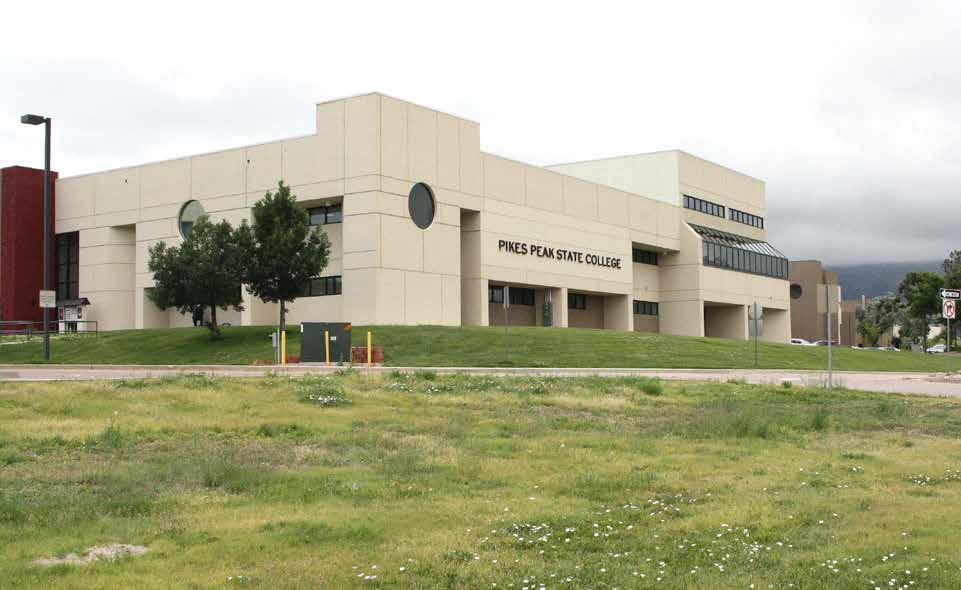

Pikes Peak State College recently received a Gold ranking for military-friendly schools from Military Times, according to school officials.
Come experience 360 degrees of ultimate indoor adventure! Book our unique venue for you next Party or Event, and ask about our Adventure Passes!
719-653-3182 | www.aircity360.com

225 Spectrum Loop, Colorado Springs

To that end, forty-one recent Mitchell High School graduates will begin their college careers at PPSC — on full scholarship — courtesy of the Mitchell Promise, a program initiated by the Dakota Foundation and the Legacy Institute earlier this year.
The college is also preparing to develop the region’s first dental hygiene program, thanks in large part to a $2.5 million grant from
The college has enjoyed a robust working relationship with area military for decades and routinely shows up on lists of the nation’s most military-supportive schools. Military Friendly, an organization that measures a college’s “commitment, effort and success” in supporting the military, named PPCC No. 2 of all large community colleges in the country in 2022. More than 25% of PPCC’s student body is made up of active-duty military and spouses, Bolton said.
In 2022, PPSC made the Military Times Best for Vets list as one of the top schools in the country for service members and veterans, placing 6th in the U.S. for two-year schools and 47th overall.

“We are growing on the four-year, bachelor’s degree side, but we will remain committed to the two-year mission we currently have.”
— Pikes Peak State College President Lance Bolton
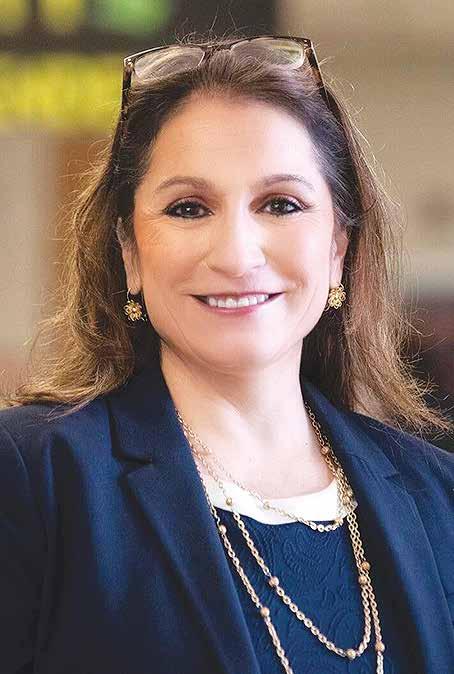
CP: What’s your vision for Colorado K-12 education?



Cordova: I believe that Colorado has so many of the right things in place to make big leaps forward in education. It’s important that we continue to focus on the big levers — building a strong foundation in early literacy, keeping kids engaged to help them get on track, and making high school a time to grow skills, competencies and experiences that really prepare high school students to succeed in life. Our local control context gives us the opportunity to learn more about how districts are doing this work and growing and learning from the success stories to support the places that may be struggling.
CP: Who has been the greatest influence on your decision to go into education and why?
By Marianne Goodland marianne.goodland@coloradopolitics.comSusana Cordova left Denver Public Schools in November 2020, having weathered the onset of the COVID -19 pandemic and a rocky relationship with the DPS board. Cordova on June 26 started in her newest role as commissioner of education for Colorado, the sole finalist chosen to succeed Katy Anthes.
Colorado Politics: Why did you decide to come back to Colorado after your time with the Denver Public Schools?

Susana Cordova: I’m inspired by the Colorado commitment to education. I have new experiences with education outside Colorado that I can add to my deep experience in Colorado, and it felt like a great opportunity to bring that together.
CP: What lessons did you learn from that experience with DPS? How will that shape your relationship with the state board of education?
Cordova: It’s so important to keep communication open and transparent. I’m a collaborator at heart and try to listen more than talk, which I think is important. It helps me hear what people mean, even if it isn’t what they say.
Cordova: It starts with my parents — my mom worked as a school secretary, so I remember spending time with her in the summers helping her collate enrollment paperwork. And then it’s a few of the special teachers who helped me along the way — Ms. Jeannie Vanderwyst, my 4th grade teacher and Mr. Eddie Cordova, the Spanish teacher at my HS (no relation) who helped me apply and get a scholarship to the University of Denver.
CP: What’s the biggest change you’ve seen in K-12 in your career?
Cordova: I think we are in the midst of the biggest change — COVID-19 flipped education and we spent an enormous amount of time, effort and funding to get kids access to devices and broadband. Now that we have devices for kids, we need to embrace the opportunity to have real world, anytime learning. The growth of artificial intelligence will also give us a chance to rethink how we use technology and support deeper learning for kids.
CP: What do you see as the biggest challenges for rural education? For urban education?
Cordova: For both rural and urban education, we are still struggling with teacher shortages and the challenges of recruiting and retaining great teachers. It’s been several challenging years
for our teachers and leaders. In rural areas, it is compounded by challenges in recruiting people to their locations, and in some areas, by the high cost of housing. In urban districts, it has been challenging to retain teachers. Our students have also had a few hard years, both academically as well as socially. If ever we needed proof that school matters, the declines in performance and the rise is student behaviors, including anxiety, depression and acting out tells us how important it is for kids to be in school. We need to continue to focus on the academic foundations, but I also think we need to help support students by creating welcoming and supportive classrooms. And we also need to do this for the adults in our districts. We need to continue to approach the work with a servant disposition to help where we can, provide guidance and give clear and accurate data about how we are doing.
CP: Your experience with DPS was with an urban district; how is the learning curve for working with rural schools?
Cordova: I feel really fortunate since I left Denver, I’ve worked with a national nonprofit, Transcend. The vast majority of districts Transcend works with are small rural districts. It was a great way to get to know the priorities in rural districts all over the country, and how rural districts can support an environment where kids have to travel a long way to school, how to recruit teachers, how to think about supporting leaders in the work they do to create amazing experiences for kids. I learned a lot working with rural superintendents. It’s interesting to think about the ways rural districts think about innovation. There’s a real focus from a rural community on their schools.
CP: One of the biggest issues in education at the state Capitol is school finance. How can you help lawmakers understand the financial struggles of school districts?
Cordova: It’s important as we think about the cliff district face as we come to the end of ESSER (the Elementary and Secondary Scholl Emergency Relief Fund, which provided resources to K-12 during the pandemic). Districts
Born in Denver, grew up in the Barnum neighborhood. Graduated from Abraham Lincoln High School and the University of Denver, bachelor’s degree in English. Master’s degree in curriculum and instruction/education administration from the University of Colorado Denver, and she anticipates receiving a doctorate in education from Southern Methodist University in 2024.
Married with two grown children, all graduates from Denver Public Schools.
Worked in DPS for 31 years as a bilingual teacher, elementary principal, as well as a a bunch of roles in central office. Served as superintendent from December 2018 to November 2020.
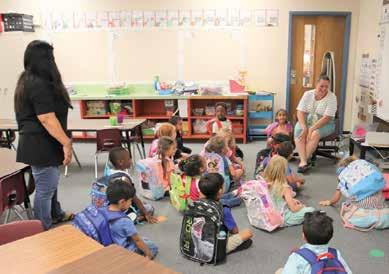
Followed that with working as deputy superintendent in Dallas Independent School District from November 2020 to July 2022, then went to Transcend, a national education nonprofit leading a superintendent network with leaders from across the country on helping create more learner centered schools.
CONTINUED FROM PAGE 21
really are facing some real challenges, because the learning needs that emerged from the pandemic is not going away at the same time as the funding. One of the bright spots and roles the department can play, is to shine a spotlight on places doing great things. It can continue to illustrate the need we have when it comes to support for educators and students.
CP: One of the things that has come out of the pandemic is a decline in enrollment, plus kids lost a lot of ground in academics and mental health. How will you help school districts address that?
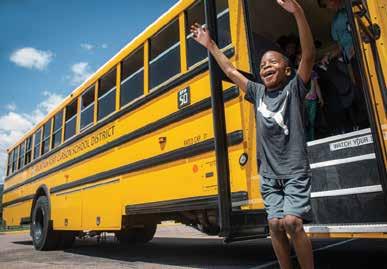
Cordova: I want to say how incredibly grateful I am personally to educators who are doing tremendous work under 3 1/2 years of really challenging circumstances. It’s incredibly important we do everything we can to support teachers and educators on academic and social/emotional needs. The first important thing to do is to
appreciate and value the work of educators in the field. From the department, we are positioned to help enable our districts and educators to get access to support: training that goes with READ Act, making sure educators have professional development and support to build foundations in early literacy; helping districts that are opting into tools to address math gaps, creating supportive networks for teachers and schools to use those resources that are available statewide to address those gaps. And from the state perspective, we can shine a spotlight on places getting great results. In the places that are struggling, support those schools that need additional help.
CP: How do you address those resource issues?
Cordova: It will take a concerted effort from the community. The department cannot solve this independently. We will have to work hard together to address solutions to the funding.
CP: How will your DPS experience guide you on this statewide role?
Cordova: What pulled me back is the deep roots I have in the state. I was fortunate to grow up and be educated in Colorado, all the way through undergraduate work. I was the recipient of the great focus Colorado puts on public education. Neither of my parents graduated from college; my father didn’t graduate from high school and earned a GED. Within two generations, their grandchildren have graduated from college (her daughter from Stanford, her son from Claremont McKenna). Both my husband and I are first generation college graduates. It’s really the support of public eduators who made a tremendous different in our lives. It’s kept me motivated, and giving back to the rich educational landscape in Colorado. We both believe deeply in the role of local control in communities in guiding districts, as well as creating a statewide landscape where really innovative things can happen.


